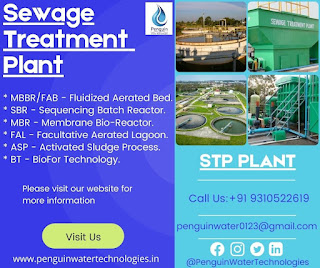Industrial Effluent Treatment Plant Process
Industrial Effluent Treatment Plant Process
The Effluent Treatment Plant Process
Varies From One Industry To Another Depending On The Type Of Industry. However,
The Common Effluent Treatment Plant Process Involves Filtering The Industrial
Effluents Using The Effluent Treatment Plant, Separating The Solid Or Other
Effluents From The Waste Water, And Then Releasing The Purified Water For
Reuse. The Industrial Effluent Treatment Plant Process Is Done Through Four
Levels. Let’s Study The Four Different Levels In Detail.
1-Preliminary
Treatment
The Preliminary Treatment Level
Includes Separating The Large-Sized Effluents Such As Wood Logs, Paper,
Plastic, Cloths, And Other Contaminants From The Industrial Waste Water
Physically. This Method Is Followed By Further Four Levels:
- Screening:
The First Step Of The Preliminary Treatment Is Taken By Following A
Screening Process Where A Screen With Identical Vents Is Used To Remove
The Large-Sized Floating Solid Particles From The Industrial Waste Water.
- Sedimentation:
This Process Involves Removing The Suspended Solid Particles From The
Water Physically Using Gravitational Force.
- Grit Chamber:
A Grit Chamber Is Used To Remove Thick And Heavy Solids Such As Sand And
Metals To Prevent Their Outflow Into The Sewers Which Can Damage
Operational Tools.
- Clarifiers:
Clarifiers Indicate Tanks That Are Specially Built For The Continuous
Removal Of Solids Deposited Due To The Sedimentation Process.
2.
Primary Treatment
This Treatment Level Requires Both
Physical And Chemical Methods To Remove The Suspended Organic Particles And
Other Settleable Matters From The Industrial Waste Water. This Involves The
Following Methods:
- Flocculation:
This Is A Physical Process That Involves Adding Undermined Particles Into
A Large Heap. This Is Done To Easily Remove The Weakened Particles From
The Water.
- Coagulation:
In This Process, Coagulants Are Mixed With The Tiny Solid Particles For
Rapid Settlement And Converting Them Into Larger Masses Which Can Be
Further Removed Through The Process Of Sedimentation And Filtration.
- Neutralization:
This Process Helps To Maintain The PH Level Of 6 To 9 So That It Can Be
Used For Further Process Of The Effluent Treatment Plant.
- Clarifiers:
Primary Clarifiers Are Used For Easing The Flow Of Water To A Certain
Level That The Organic Particles Subside In The Bottom Of The Tank.
3.Secondary
Treatment (Biological)
In This Process Of EffluentTreatment Plant, Biological And Chemical Methods Are Used To Further Process
The Suspended Solids And Other Remaining Particles. This Level Also Has Four
Stages Of Processing The Water After The Primary Level Treatment.
- Sludge Process:
An Activated Sludge Process Is Used For The Treatment Of Waste Water With
The Help Of Air And A Biological Floc Of Bacterial Composition.
- Aerated Lagoons:
Lagoons Refers To Ponds Where The Water Is Further Treated By Inflating
Air Artificially. This Is Done To Biologically Oxidize The Waste Water.
- Sprinkling Filters:
These Filters Help In The Effluent Treatment Plant Process By Biologically
Processing The Excess Industrial Waste From The Water.
- Rotating Contactor:
After The Filtration, The Waste Water Comes In Contact With A Biological
Rotating Contactor Where The Contaminants Are Removed From The Waste Water
Before Releasing It Into The Environment.
4.Disinfection
Treatment (Advanced)
This Is The Final Level Of Effluent
Treatment Plant Process Which Is Also Known As A Tertiary Or Advanced
Treatment. The Main Purpose Of This Treatment Is To Process The Water To Meet A
Desired Level Of Quality Before It Is Reused.
- Chemical Coagulation And Sedimentation: This Process Is Performed After The Primary And
Secondary Treatment To Remove The Solid Matter From The Waste At An
Increasing Rate.
- Filtration:
To Further Improve The Quality Of The Water, The Refined Waste Water Is
Processed Again By Passing It Through The Adjacent Filtration Plant. This
Filtration Plant Has Large Blocks Which Ensure The High Quality Of The
Water.
- Reverse Osmosis:
Certain Amount Of Pressure Is Used In This Process. It Helps In Retaining
The Remaining Pollutants Of The Water While Allowing The Clean Water To
Pass From The Other Side.
- UV Disinfection:
At The Final Stage Of The Effluent Treatment Plant Process, UV Disinfectants
Are Used To Make Sure No Residual Pollutants Are Left In The Water. This
Disinfectant Is Ideal For Industrial Waste Water And Is Commonly Used In
The Effluent Treatment Plant Process To Ensure A Standard Quality Of The
Water.



Comments
Post a Comment